Maj Gen Surjit Singh says : Thomas and I met as young teenagers back in 1958. We were coursemates and in the same squadron.
Thomas stood first in the UPSC entrance process. He maintained this throughout the 6 terms and won the Silver Medal. He also won the Air Force Trophy, the Yachting Trophy and many book prizes. He was captain of the NDA Sailing team and was awarded a Sailing Blue. He stood 2nd in the CBK class in the inaugural race of the Yachting Association of India at the young age of 17. I have elsewhere in Guftagu written about his role as SCC in the renaming of Hunter squadron.
During his Air Force training, Thomas continued his NDA performance. He was awarded the Presidents’ Plaque in 1962 and took part in the conflict with China later the same year. An engineer at heart, he passed the Aeronautical Society exam in 1965, standing first all India. He was selected as the first Indian to undergo the test pilots course at the USAF Test Pilots School where he trained under Col “Buzz” Aldrin, of Apollo 11, the first Moon landing.
XIX NDA Hunter Squadron
In USA, Thomas flew a number of US aircraft including the T-33, T-38, F-104, C-141, B-52, B-57, C-119K, Boeing 737 and gliders. From the engineering point of view, the most remarkable aircraft was the B-26 Variable Stability Aircraft of Cornell University (now Calspan.)
On return to India, he was an obvious choice to start the IAF Test Pilots School, the first in a developing country and then the fifth in the world. Along the way, Thomas has flown most of the aircraft then in the IAF. The list is long and includes the Canberra, Hunter, Gnat, Ajeet, Dakota, Packet, Marut, Mig-21, HS748, Kiran, Iskra and even two helicopters — the Chetak and Cheetah. He also did test flying instruction in many of them.
The IAF Test Pilot School is a national institution that has trained both our Cosmonauts and several hundred test pilots and flight test engineers. Students are from the Army, Navy, Air Force and Coast Guard. Recently, they graduated the first lady Flight Test Engineer. The LCA Tejas, ALH Dhruv and other development projects owe much to the graduates of the Test Pilots School. They will be celebrating their Golden Jubilee later this year.
On my request, he has included an introduction to flight testing and mentioned a few well known test pilots. Over to Thomas and his story on starting the IAF Test Pilots School.
STARTING THE INDIAN AIR FORCE TEST PILOTS SCHOOL
by
Joseph Thomas
Most of the early aviation pioneers combined the roles of designers and test pilots. Such pioneers include Otto Lilienthal, the Wright Brothers and Glen Curtiss. As aviation advanced and became more complex, people had to specialize. Aeronautical engineers and pilots became separate disciplines with, of course, a lot of common ground.
In course of time, flight testing became a further specialization for pilots and engineers. Engineers who planned and analysed flight tests became known as flight test engineers (FTEs). Among engineers, we again have two broad specializations of mechanical and electronic. Wherever seating permits, FTEs fly along with test pilots for the flight trials. Many FTEs go on to become aircraft designers. The most celebrated among such FTEs is Burt Rutan, founder or co-founder of multiple aerospace companies, including the Rutan Aircraft Factory, Scaled Composites, Mojave Aerospace Ventures, and The Spaceship Company.
Test pilots can be experimental and engineering test pilots (investigating the characteristics of new types of aircraft during development) or production test pilots (the more mundane role of confirming the characteristics of new aircraft as they come off the production line). Many test pilots would perform both roles during their careers. Modern test pilots often receive formal training from highly-selective military test pilot schools, but other test pilots receive training and experience from civilian institutions and/or manufacturers’ test pilot development programs.
Well known Indian test pilots include Cosmonauts Rakesh Sharma and Ravish Malhotra. Two test pilots have become Air Chiefs — S Krishnaswamy and RKS Bhadauria. Similarly, two have become Naval Chiefs — RH Tahiliani and Arun Prakash. The Blue Skies Podcast (https://blueskiespodcast.com) covers the careers of many such stalwarts.
The Society of Experimental Test Pilots (https://www.setp.org) and the Society of Flight Test Engineers (https://www.sfte.org) are the leading professional societies of test pilots and flight test engineers respectively. In India, we have a Flight Test Special Interests Group within the Aeronautical Society of India.
Soon after Independence, we started sending one or two pilots every year to the Empire Test Pilots School in Britain. The first two such pilots were Suranjan Das and Roshan Suri in 1948. Subsequently, in the late fifties and early sixties, we also got a few vacancies at EPNER in France. But the 1965 war changed all that. Britain (and USA) imposed sanctions on us and we stopped getting test pilot school vacancies. France did not impose sanctions and it is not known why we did not approach them.
By 1970, the shortage of test pilots became critical and Air HQ tasked all the air attaches to find and get vacancies for our pilots. The efforts met with success and we got one vacancy each in France, Britain and USA. The French vacancy was for a team of test pilot and flight test engineer. Air HQ selected Flt Lts P Rajkumar and KT Sudhir for that, S Krishnaswamy for Britain and J Thomas for USAF TPS.
Simultaneously, Air HQ decided to start test pilot training in India. The reasoning was that foreign vacancies were just not enough to meet the demand. The proposal met stiff opposition from the test pilot community. Finally, Air HQ pulled out its trump card – our test pilots on deputation to Egypt had trained some of their pilots in flight testing. Even then, there was foot dragging and Air HQ settled for a watered down version called “Flight Inspectors’ Course.” (FIC). And the short 3 month course had ground subjects at Air Force Technical College. Forgotten was the fact that AFTC had no expertise in flight testing. The first FIC was conducted in early 1972. The pilots were detailed for the course and included a mix of capabilities. No consideration was given whether the student “Flight Inspector” was interested or not.
I had been put on tentative standby in January 1971 for the course abroad to start in July. I was sent to Aircraft & Armament Testing Unit, (A&ATU) Kanpur for familiarisation on different types. A & ATU had a grand total of 3 test pilots – Gp Capt Kapil Bhargava, Sqn Ldr Ajit Lamba and Sqn Ldr AK Sapre. There were no flight test engineers. Two M Tech engineer officers, Sqn Ldr Chittaranjan and Sqn Ldr GB Singh completed the flight testing team.
I was taken up for flying in the Hunter, HS 748 and Kiran at A & ATU. Also got a chance to fly with Sqn Ldr P Ashoka in the HS 748 at HAL. This flying was extremely useful but there was no introduction at all to any sort of flight testing.
On the ground subjects side, I was left to my own devices. The two engineers gave me some USAF Test Pilot Sschool notes that were available to A & ATU. The descriptive part of it was very interesting and useful. But the mathematical treatment was generally too difficult for me, even though I was a graduate of the Aeronautical Society with Theory of Flight and Aircraft Instruments among my subjects. I naively believed that USAF TPS would not impose such advanced stuff on pilots.
For the benefit of today’s generation, I should mention that, in those days, the entry qualification for the Flying branch was Matriculation. Air Force cadets at NDA were in the Non-Tech stream. In general, the pilots took pride in their lack of college degrees or equivalent. Yes, the situation has changed a lot with the entry qualification steadily being upgraded to BSc and now B Tech.
To cut a long story short, when I landed up at USAF TPS, I found a whole lot of student test pilots who already had M Tech degrees. Our Commandant had a PhD from MIT and his subject was “Manned Orbital Rendezvous”. He applied his research for the Apollo space programme. Our instructors told us that they could have filled the class with M Tech graduates but they needed a mix of bomber, fighter and transport pilots. Hence, they were compelled to accept B Techs also.
The foreign students had all spent about a year in their respective flight test establishments learning about flight testing. Even though the Italian and Brazilian students were not fluent in English, they made up for it by their technical and flight test training.
Edwards AFB is the mecca of aviation, particularly military aviation. But I was so busy coping up with the study and workload that I had no time to acquaint myself with some of the latest developments. Of course, a lot of it was classified and out of bounds even for the USAF students.
Apart from the technical and practical aspects of flight testing, the major lesson I learnt in USA is that, for a nation to progress in science and technology, quantity in education is as important as quality. Merely having a handful of genius scientists and engineers will get us nowhere. We need hundreds of them. And they need to be co-located and arguing with one another.
In those days we did not have the internet, social media and such. The television showed mainly US domestic news. Communication with the home country was by letters. It was only when I got back to India that I came to know about the changes in A & ATU. Sqn Ldr Sapre had lost his life in a tragic air accident. Sqn Ldr Ajit Lamba had been promoted and posted out to command a squadron. Sqn Ldrs Chittaranjan and GB Singh had been posted to HAL and ADE respectively. Except for the CO / Commandant, Gp Capt Kapil Bhargava, the entire testing team had changed. Because of the shortage of “senior” squadron leaders, Sqn Ldr CKK Menon, VrC had been posted in as Chief Test Pilot.
My exposure to USAF TPS and the extensive pre-course training that other foreign students had received, had made me determined to help our future student test pilots. On reporting to A & ATU, I found it renamed as Aircraft and Systems Testing Establishment (ASTE) with a sanctioned establishment of one Sqn Ldr to run a Test Pilots School. Yes, exactly one officer.
We were just three test pilots, other than the Commandant. So Sqn Ldr Krishnaswamy was made the OC Flight Test Squadron, Sqn Ldr Rajkumar became the Senior Test Pilot and I was made OC Test Pilots School. We three fitted into the respective slots because I did take an interest in training the pilots of the Flight Inspectors Courses.
At this juncture, Air HQ asked whether we needed any help from the Russians to start the Test Pilots School. This was nothing but the pervasive subservience that we had (and partly still have) for the White Man. Without referring to the chain of command, I wrote back to Air HQ categorically rejecting the suggestion. I was overstepping my authority but I felt strongly about the issue. Air HQ did not raise the issue again for more than 3 years. However, in early 1976 with different people running the show, Air HQ sent two experienced test pilots to the Test Pilots School in Britain for “familiarization” before upgrading the Indian Test Pilots School. The two persons who were sent were themselves graduates of the British school. So it was nothing but a display of subservience to the White Man.
I ran the 3rd and 4th Flight Inspectors’ Courses at Kanpur. Sqn Ldr VP Kala became the first of our candidates who received adequate pre-course training before going for the course in Britain. It made all the difference. As luck would have it, he developed a bone infection during the course and was unable to complete the flying syllabus. But he had done so well in ground subjects, report writing and the limited flying that he did, that the staff did not have the heart to suspend him. They made an exception and graduated him.
The other two Flight Inspector graduates to go for courses abroad were Flt Lts Deepak Yadav and Ravish Malhotra. Another distinguished Flight Inspector graduate was Flt Lt Cheema but events overtook him. He went on deputation to HAL and missed going abroad.
In December 1972, Gp Capt (later Air Cmde) CV Gole took over command of ASTE. He was a Distinguished Graduate of the Empire Test Pilots School (ETPS), UK and a hard taskmaster. He had the vision to understand that test pilots were needed in quantity and a test pilots school was an absolute necessity. A large part of the credit for what the Test Pilots School is today goes to Air Cmde Gole. Among other things, he reinstated the proposal to have a “Suranjan Das trophy” and to get HAL to donate a grand trophy.
The Suranjan Das Trophy, named after the legendary first Indian test pilot.
A 2015 Reunion.
(L to R) Ravish Malhotra (4 FIC & Edwards, USA 1974), S Krishnaswamy (ETPS, UK 1972),
J Thomas (Edwards, USA 1972), P Rajkumar (EPNER, France 1972).
Ravish Malhotra became a Cosmonaut along with Rakesh Sharma.
S Krishnaswamy became the 19th Chief of Air Staff.
P Rajkumar founded the National Flight Test Centre and was Project Director of the LCA Project
Air Cmde Gole accepted the Air HQ proposal to shift ASTE to Bangalore. This we did in June 1973 even though the supporting facilities were grossly inadequate. In Kanpur we were a lodger unit of AF Station Kanpur. Admin, Logistics and Accounts facilities were all provided by the station. Even a large part of engineering support was from the station resources.
At Bangalore, we were accommodated in a new hangar that was not fully complete. TPS was allotted just two rooms. The larger one served as the classroom. By placing a line of steel cupboards (that kept each student’s flying clothing) in a line, we partitioned the room to give a small crew room to the students. I got the contractor to plaster one wall with black cement and thus we got a blackboard.
A second, much smaller, room became the staff room. Cpl Sajjan Lal was assigned to TPS. He was new and could not type English correctly. But he was keen to learn and soon became proficient in typing. An extremely sincere person, he contributed a lot to the initial setting up of the school.
Sqn Ldr KT Sudhir, a Tech Pilot, had qualified as a Flight Test Engineer at EPNER and he helped a lot with ground subjects, especially Stability and Control. Sqn Ldrs HK Khanna, AE (L) and Mohan Raj, AE(M), Flt Engr were posted to ASTE just before the first PTP course and assigned to TPS. Sqn Ldr P Rajkumar helped out with flying exercises, whenever he could.
With this team we started the first PTP course within two weeks of moving to Bangalore.
Air HQ accepted our proposal to have a selection camp at ASTE lasting a week. While the candidates were detailed for the selection camp, rather than being volunteers, it was understood that they were free to drop out, if they so wished.
We discussed and concluded that the ability and willingness to study on their own is a very important part of a test pilots’ make-up. We devised a test for this. On their first day, the candidates were given a difficult test in aerodynamics and principles of flight. Then, on the fourth day, they got a surprise when the same test was again given to them. Many of them got exactly the same marks on both tests. But, a few of them took the trouble of finding information — to the extent possible in those pre-internet days — of things they did not know. We took the marks of the second test plus the improvement shown as the final marks in ground subjects.
Sqn Ldr KT Sudhir
At least one of the candidates, Flt Lt SH Apte, got a surprise when he was selected. His main strength was the improvement he showed in the three day interval between the two tests. He proved our method right by winning the Dunlop trophy for showing maximum progress during the course. Subsequently, he had a distinguished career as a test pilot with HAL.
We ran the Production Test Pilot (PTP) courses as pre-cursors to Experimental TP courses. Instructors were given full freedom to decide on the syllabus for their respective subjects. They were free to use the French, British, US or their own ideas. The reasoning was that, in real life, the graduates would have to deal with aircraft and systems from different countries. Aeronautical Development Establishment (ADE) helped out by reproducing the USAF TPS notes with their semi-automatic stencil cutting machine.
Courtesy Mr Sanadi, M/S Dunlop presented a trophy to the school.
The flying exercises included both performance and stability & control. The students did flight tests and report writing on climb, cruise, stalling and spinning. The fixed wing pilots were all from fighters. They all got to fly the HS748. The 2nd course onwards got to fly the Canberra also.
Staff seated (L to R) Sqn Ldr K Badrinarayan, Sqn Ldr KT Sudhir, Wg Cdr PK Dey, Air Cmde CV Gole,
Sqn Ldr J Thomas, Sqn Ldr HK Khanna, Flt Lt Srinivasan
Standing (L to R) Flt Lt SN Garg, Sqn Ldr S Inamdar, Flt Lt MK Pant, Flt Lt PK Yadav, Flt Lt P Ajit
The students also gave a talk on a subject of their choice and wrote a service paper on a current or futuristic aviation subject. Overall, there was enough training to equip a pilot to serve in ASTE or HAL. As the course got underway, I offered to convert the course to an Experimental TP course. However, the Commandant turned it down, saying that it would prejudice our case for adequate resources.
Graduates of the first PTP course were all declared fit for undergoing experimental TP courses
ASTE was critically short of test pilots and engineers. One result was that, even though I was the sole flying instructor, I went on several outstation trials also. Some of these lasted several weeks and the students were, perforce, grounded. As a result, the 1st course graduation was delayed. Subsequent courses graduated in time.
Missile target trials on Canberra. Test Pilot School training was often interrupted for urgent outstation trials.
Air Cmde Gole accepted Air HQ proposal to train rotary wing test pilots also. So, three RW pilots joined the 3rd PTPC. They were PS Gauri, Gotge and Pathreekar. They joined PK Tayal, Thakur, Jain, RC Sharma and Raghu Rajan. By this time, Sqn Ldrs BR Chhokker and K Badrinarayanan joined TPS as the rotary wing test pilot and flight test engineer respectively. Flt Lt SN Kohli, a Flight Engineer, joined the staff. Flt Lt Ghildiyal, another RW TP joined FTS and he also helped out
A fun fact is that, in 1973, ASTE got the very first digital calculator in the IAF. Prior to that, all calculations were by slide rule. HCL was then marketing a table top digital calculator. I put up a case for two of them. But it was beyond the financial powers of the Commandant. And it was a novel item. Fortunately, Air Cmde Gole had done the NDC course with a civilian officer who was then posted as CDA (AF). It took a DO letter to the CDA (AF) himself to get the two calculators sanctioned.
Right in 1973, we rationalised the aircraft fleet. While at Kanpur, No 1 BRD had helped out in maintaining our aircraft. 4 BRD (for engines) and HAL Kanpur also gave support. On moving to Bangalore, we were suddenly starved of maintenance, logistic, administrative and accounts support. We did not even have spare tyres for most aircraft. The S-22 was particularly difficult to maintain. It required 1 ½ cylinders of oxygen for each sortie. (It consumed oxygen for starting and for each afterburner engagement.) So we decided that the fleet should focus on aircraft where HAL Bangalore could help us. Aircraft could be serviced as “Visiting Aircraft.”
Keeping the TPS requirements in mind, we also decided to focus on trainer aircraft, wherever possible. After discussion with Air HQ, the S-22, Mig-21 and Hunter were allotted out. In their place, we got the Canberra, Marut, Gnat and Chetak. The HS 748 remained. When our situation improved somewhat, we also got a Mig-21 trainer. At various times, we also got various aircraft loan allotted for trials.
On completion of the 3rd PTPC I moved as OC FTS and Sqn Ldr P Rajkumar took over as OC TPS. However, I continued to help out with test flying instruction, especially on the Canberra. That brought me in contact with two future celebrities – Cosmonaut Rakesh Sharma and CNS Arun Prakash.
Adm Arun Prakash
Cosmonaut Rakesh Sharma
Fast forward to 2022 and the Golden Jubilee of the Test Pilots School. TPS is now training both
flight test engineers and pilots. Both rotary and fixed wing test crew are trained. The total pool of flight test crew consists of several hundreds. The FTEs stay back for a year and do a research project and thesis to earn an M Tech. A similar facility for test pilots has not yet been instituted
From 2015 till 2019, I was privileged to deliver the Commencement Address to the incoming Flight Test courses. In January 2016, I conducted a workshop on asymmetric flying, engine out testing and propeller management.
TPS has trained one foreign test pilot, an Iraqi national and one PTP, a Bangla Deshi. TPS has a regular intake of Army and Naval engineers and pilots. One Coast Guard pilot has done a PTP course. It is hoped that the exchange of students and instructors will be expanded.
As a fun fact, IAF TPS is unique in awarding a diploma to the spouses of graduates. This was started by me right at the first PTPC graduation. Then it was an informal, light hearted certificate awarded at the graduation dinner. It is now much more formal and elaborate.
Videos, Podcasts and Further Reading
Test Pilot
https://en.wikipedia.org/wiki/Test_pilot
List of Test Pilot Schools
https://en.wikipedia.org/wiki/List_of_test_pilot_schools
Indian Air Force Test Pilots School
https://ssbcrackexams.com/indian-air-force-test-pilot-school-2/
Indian Air Force Test Pilots School
https://en.wikipedia.org/wiki/Indian_Air_Force_Test_Pilot_School
Insight into Training of Best of the Best – Test Pilots School ( ASTE)
https://www.youtube.com/watch?v=YjqVLfv9024
Blueskies Podcast – S1 Ep10: Joseph Thomas – Part 2 – Test Flying
https://www.youtube.com/watch?v=gK-7oglE0CA
Blueskies Podcast – S1Ep46 – LCA Part 5: PK Raveendran – Flight Test Engineer for the LCA
https://www.youtube.com/watch?v=DHDgdotp9RU
Also listen to :
Blueskies Podcast – S1Ep37: Jaideep Maolankar – Naval fighter pilot and test pilot
Blueskies Podcast – S1Ep42 – LCA Part 1: Philip Rajkumar – Introduction and overview of the program
And subsequent podcasts in the series
Test Pilot – Episode 1
https://www.youtube.com/watch?v=999Q_eYCRpY
Also Episodes 2 to 6

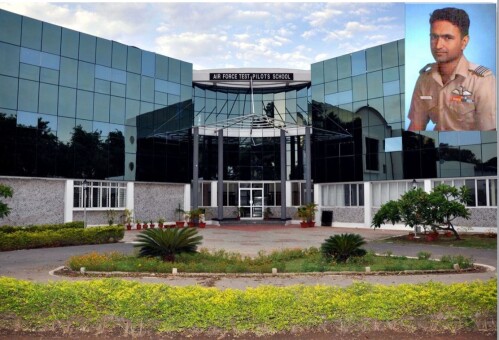
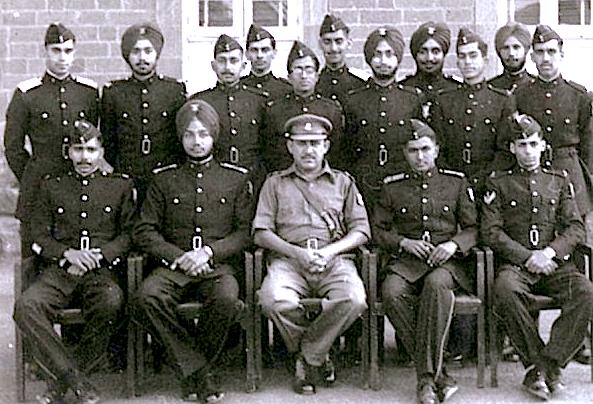
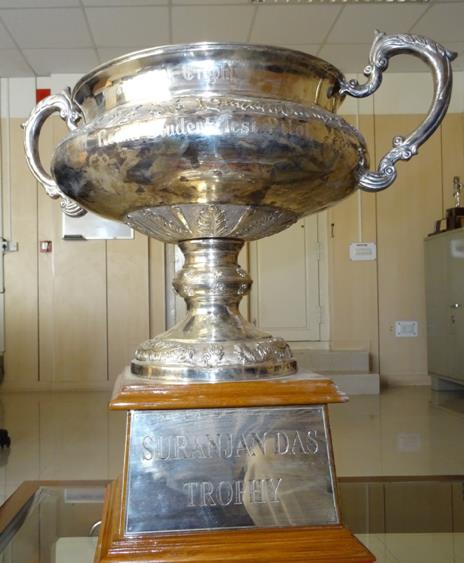
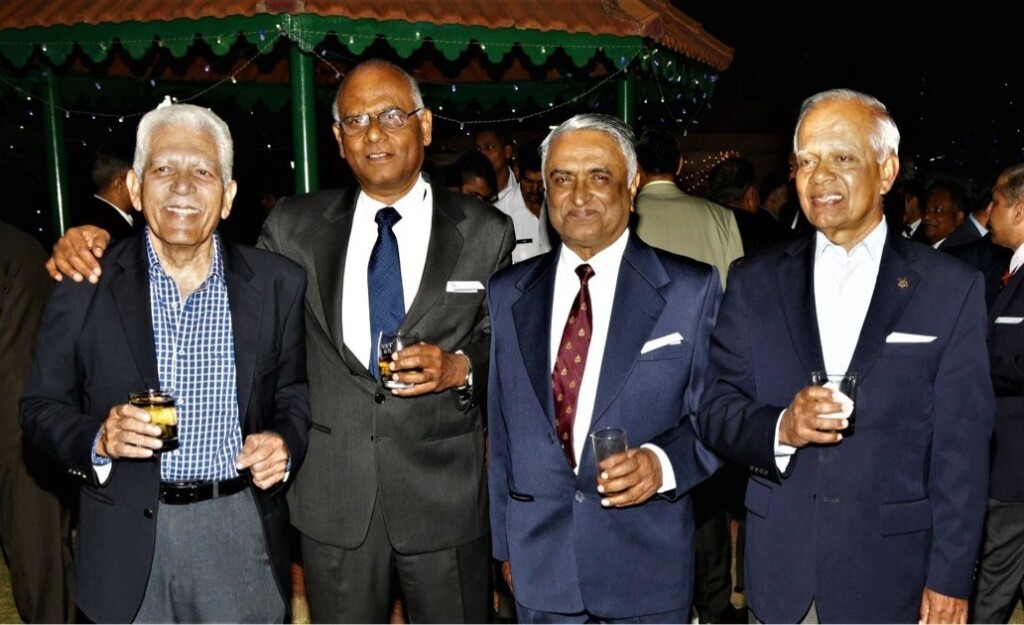
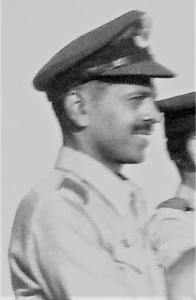



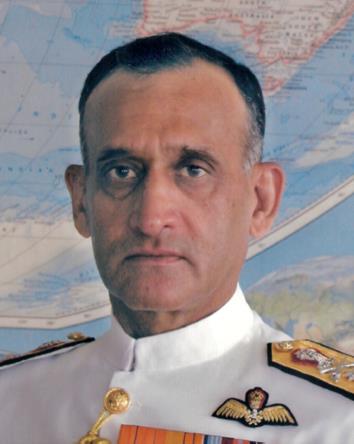
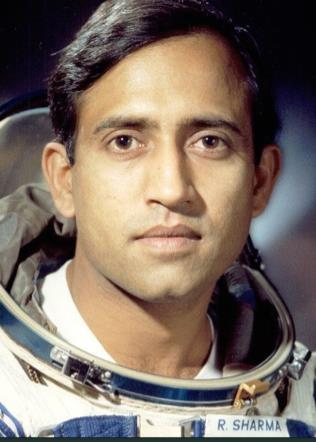

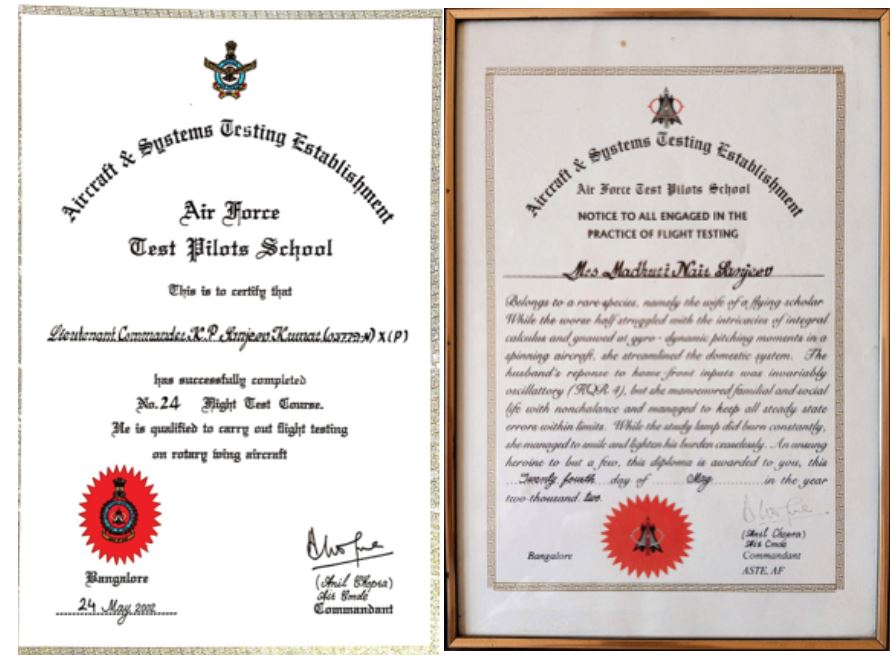






When I received your mail of Feb 19th forwarding a mail from Maj Gen Surjit Singh I glanced through it briefly. When I realized that there was quite a bit of reading material, I decided to save it for reading during my trip to Calicut. I did just that!
You have had an amazing journey in the Indian Air Force!
I first read the post about Admiral Arun Prakash. The demonstration of asymmetric flying in the Canberra with you as instructor was so well written, that I could literally feel my safe legs turning to jelly! I let out a not very soft “WOW” mid-air when I read the bit where you trashed Adm Prakash’s purportedly rock solid defence with the US Navy Text Book to validate his calculations and had the gall to correct the printed matter with red ink and sign it!
The Ukranian naval base where the Russians had “created” an aircraft carrier defied imagination.
Maj Gen Surjit Singh’s narrative was catchy. Standing first in the UPSC entrance exams and throughout 6 long terms is probably unparalleled. So is 2nd place in yachting at age 17! I remember reading about the details of renaming of the Hunter squadron in one of earlier posts.
I did not know till now that you were the first Indian to train at the USAF Test Pilots School and that you had trained under Astronaut Aldrin.
The wide variety of aircraft you flew in the USA is mind boggling, though I did not quite understand their descriptions.
I did know that you were the one who set up the IAF Test Pilot’s School. I was not quite aware that students for the Army, Navy and Coast Guard also were trained there.
The struggle with slide rules and the lone calculating machine and the arrival of the first calculator brought a smile to my lips. I would like to borrow your method of repeating the first day’s question paper on the final day of the entrance process because as it proved, this is the only way to see how far a person is willing to go to learn on his own. Absolutely brilliant, I must add!
Shunning the White Man for help in a pioneering venture oozes guts. Especially when the courage of your conviction drives you to ignore the chain of command.
Painting one wall in a room partitioned with steel almirahs, with black cement to use as a blackboard is funny, yet highly practical for a start up strapped for funds. Finally, awarding diplomas to the spouses of graduates was indeed a warm hearted gesture!
Thank you for sharing the post. I have shared these thoughts with others at home.
Liked the article very much. It was my last and most favoured Unit. Had a longer stint there during the early years of TPS, ETPS, FTS etc., (1975-82).
Tommy sir, many thanks for the forwarded email and my references therein.
You had converted me onto the Canberra during the PTP course at ASTE. Even today, when i think about that experience my leg goes into a spasm doing all those single engine approaches!
Stood me in good stead as I did my Preview on the B 66 and got the max marks for it but missed out on the Flightt Evaluation trophy because my ground subjects avg was 69.6% while trophy eligibility cut off was 70%.
Thanks for that experience, nonetheless!
Thanks Rakesh. The Canberra was an excellent aircraft for the Test Pilots Sschool because it showed what twin engine stability and control should not be.
The sad part is that we lost a number of crew and aircraft due to these issues.
In 1970 I went to Preston, UK to collect a B-66. I took the opportunity to meet Roland Beamont who did all the initial flight tests of the Canberra. I asked him why the engines were kept so far out, just like a propeller aircraft. He tried to say things like cross wind effects etc. Partly true because the Avon Mk I (on the early Marks including the T-4) would easily stall during cross wind roller take offs. Then his secretary pulled him away for another meeting.
But glad to say that international standards for maximum permissible rudder force for asymmetric flying has been reduced from 180 lbs to 150 lbs.
Thanks for the article. I joined ASTE on promotion as Sgt in Avionics Lab in May 1975 in the old Hangar at HAL Bangalore. Later moved to a bigger Hangar opposite that and stayed there until 1982 when I left the AF as a JWO. I made a record of a 7-year stay in one Unit. Had a wonderful opportunity of performing a trial modification in Mig – installing American Collins V/UHF for the first time and went for flight trials at Jamnagar. Had a lot of interaction with most of the Officers at that time – I still remember Sqn Ldr S K Misra (tech sigs) who gave me the opportunity of modification in Mig a/c. During my service there received a Commendation from the CAS through the hands of Air Cdr PK Dey in 1978 or so. I remember your name very much – I think there was one Radar Mechanic, a baldy chap, who was related(?) to you or very familiar to you – my memories are fading now. Hope you & your family doing well……………
Now I remember, his name is Francis, a Radar tradesman from DSS. Unfortunately I also remember the Kiran aircrash where F/L Ghildiyal & TPR Kishore died. wonderful pilots……….
Thanks Sundara Raman. Nice connecting to old colleagues.
Yes, the Kiran accident you have mentioned was tragic. The pilots were Flt Lts D Yadav and Ghildiyal and the aircraft was with HAL. FLt TR Kishore’s accident was several years later and that was also an HAL aircraft.
Yes, I remember Francis. We were neighbours as children in Tambaram back in 1947.
Good read and a lovely articulation of a very challenging task sir.
As it is said “The only way to get ahead is to accept challenges”
And I do feel that such challenges are indeed what make a life journey memorable!
Thanks sir!
Thank you, Joseph!
Such an interesting read. Thank you for remembering me and sharing it with me. You guys are all well and truly such superstars!
My best wishes to you, as always.
Dear Thomas Sir,
I was totally engrossed while reading the post trying to comprehend the complexities of the FTP and FTE program and the nuances of setting up a Training School from scratch. It was hilarious to read that purchase of a digital calculator was beyond the financial powers of Comdt and needed strings to be pulled !!. How times have changed. Presentation of diploma to spouses must be also first of its kind initiative and only underscores the gravitas of the course program and the sacrifices it demands from all concerned. That you are still conducting highly technical workshops, almost five decades after becoming a Test Pilot, speaks volumes about your deep knowledge base and commitment to keep it updated.
Best Regards
Thanks General. The digital calculators were a first for the air force and, probably, for all the Defence forces. Prior to that, we were using slide rules and a few mainframe computers. BTW, the Apollo 11 first Moon landing had a digital computer for the lunar lander with a memory of 64 kB. It could not cope during the final stages of landing and the lunar module pilot had to take over manually.
Each digital calculator cost was Rs 36,000. For two calculators, in today’s money, the cost was over Rs 10 lakhs. Yes, we had 32 % inflation in 1973 and the nation wen tthrough a major crisis.
In 1972, I spent 4 months with Lockheed. They were also using slide rules and mainframe computers.
The diploma for spouses is very popular. Many of them frame the diplomas. I should have mentioned that, last year, the school graduated the first lady Flight Test Engineer.
Gulu Hora
6:02 PM (11 minutes ago)
to me
Thanks, Sir. Thoroughly got absorbed while reading it. Having served for 2years in Raso Dinjan I could perhaps relate more than others. Keep writing and sending such interesting articles. Kudos to Thomas for an illustrious career.
Regards,
Col Gulu Hora.
Thanks Col Gulu Hora.
I was privileged to work with RASO and FASO in J & K in 1962. Our ejection crew worked in extremely difficult conditions — high altitude, no pressurisation, open door, freezing cold air. Many posts depended solely on air supply, especially in winter.
Please see https://amolak.in/web/lifeline-through-the-sky-ladakh-1962-by-wg-cdr-j-thomasvm/
Dear General/ Joseph,
Very interesting post! Joseph, I salute you for such a pioneering undertaking as starting a test pilots’ school!
A few pertinent points: My father was in HAL between 1965-1969 (shortly after, after which my brother and I joined Lovedale – due to his frequent transfers). He worked with Air Marshal PC Lal (the CMD) and a gentleman by the name of Ghatge (who was the chief designer and took both the two families to see “the magnificent men and their flying machines”). From 1973-1975, my father was Joint Secretary in the Cabinet Secretariat (I believe you were there too, Joseph, but I don’t know what period).
In 1979, “Buzz” Aldrin (together with the consul general) visited IIT, M (just before I graduated. After Buzz’s talk, we were standing around chatting, and the consul general asked those who were going for further studies to send in their passports to him. That “gratis” visa is attached! I’m familiar with Buzz Aldrin’s PH.D thesis on orbital rendezvous using angular information alone (and not range information as can be obtained by radar) and this is at Line-of-sight guidance techniques for manned orbital rendezvous (mit.edu).
Regards.
Sriram
Thanks Sriram. Dr Ghatge was the first aircraft designer at HAL. Please see https://en.wikipedia.org/wiki/Vishnu_Madav_Ghatage
His son is on Facebook and keeps his memory alive. Dr Ghatge’s best work has been the Kiran which first flew on 04 Sep 1964. I happened to be in Bangalore on that day and witnessed the first flight by Suranjan Das. It is a pity that a Kiran Mark III has not been developed. Instead we have resorted to imports.
Glad that you have met Buzz Aldrin. Thanks for the link to his doctoral thesis. He is now 92 and we hear much less about him these days. For many years he was campaigning for a manned mission to Mars. His slogan is “Get your ass to Mars.” Hope you have read his books.
Note that you studied and graduated from Rensselaer. It is as good as MIT, though lesser known. A few years ago, one of my nephews did PhD in Nanotechnology from there. He immediately got employed as the Chief Technology Officer of a start up in CA.
Brig PT Gangadharan
11:40 AM (5 hours ago)
to me
Dear Sir,
Wg Cdr Thomas has an unbeatable track record and the Armed Forces have immensely benefitted from his dynamic leadership and professional excellence. He should have risen very high in the IAF.
With warm regards,
Brigadier PT Gangadharan,Guards,
Veteran,
Kozhikode(Calicut)-673016,
Tel-0495 2356863/09447766863
KRISHNA KANNAN
10:45 AM (6 hours ago)
to J, me
Dear JT Sir,
It was a privilege reading through your write-up on the TPS! As is usual with your written pieces, it is to the point and yet highly informative. I am thankful to Gen Surjit for bringing it out. From his informal foreword, I have become wiser now about certain facts in your remarkable career path, not known to me earlier.
Take care and stay well!
Best regards,
Kannan
Joseph Thomas
9:17 AM (7 hours ago)
to me
Thanks, Surjit. Just one point and it is important.
Currently, fully half the students at the Test Pilots School are engineers. They are equally divided between aeronautical/mechanical and aeronautical/electronic.
And the course itself consists of two streams — a rotary-wing and fixed-wing. And one vacancy each is given to the Navy and Army. The annual intake is only about 18.
So we have a thorough mix of background qualifications.
Yes, it is wrong to call it a Test Pilots School. That is more due to historical reasons. “Flight Test College” would be more appropriate.
I have referred to videos, podcasts and further reading at the end. Those who are interested can refer to them for full information. As it is, my article was lengthy and I drastically cut out several paragraphs from the draft.
3007
Krishna Menon
9:14 AM (7 hours ago)
to me
Thanks for sharing this article and your excellent introduction.
Krishna
Paramjit Singh
8:05 AM (9 hours ago)
to me
Good morning Sir,
The story about SDD must be written by you. It’s your baby which is now flourishing!!
Warm regards
Dear Sir,
Your raising of the SDD was a momentous event in the history of
the Corps. Its effectiveness was so immense that the General Staff
decided to make it an All Arms Institute.
You MUST write your story on how this Institute unfolded.
Warm regards and best wishes,
Stay Safe,
Raj
Joseph Thomas
10:10 AM (6 hours ago)
to george, me
Thanks George. Our BCC of 18th course was Harish Rao. We were good friends.
Happy Valentine’s day
Thomas
Hi Surjit and Joseph;
Thanks for the wonderful article about your careers. Both of you have had wonderful careers. The test pilot school article was quite captivating. It reminded me of the very brief stint of flying I did in Allahabad while in the Navy. Fortunately or unfortunately I quit after I did my solo. Of course this was nowhere near the rigor and excitement of a test pilot.
Your articles were very informative and congratulation to a brilliant career.
Thanks, Surjit, for forwarding the article and your summary of Joseph’s career.
Best Regards,
George
PS Joseph, do you recall the name of our BCC (18th course). He was an Airforce cadet and brilliant one at that. Have you followed his career?
Article worth reading. I knew Wg Cdr Thomas but did not know he had accomplished so much. Several of the names are familiar, Mohan Raj being my course mate at AFTC.
Thanks Mishra sir. I do recall the Radhome trials. As a fallout we put up a proposal for a radar homing air to surface missile. It took several decades to fructify. Please see https://en.wikipedia.org/wiki/Rudram-1
Thanks,very informative article how it all started and where it is today.Test pilots school will be of great help to our PM’s vision to Make in India.
Thanks DPS. The swadeshi movement was started by Gandhiji more than a century ago. And the Tata Steel plant at Jamshedpur was established more than a century ago. The chief commissioner for the Indian Railways of the time, Frederick Upcott, is on record as saying “I will undertake to eat every pound of steel rail they succeed in making.” See
https://openthemagazine.com/columns/others-columns/for-a-pound-of-steel/
And please don’t forget that HAL was established by Walchand Hirachand in 1940. In 1947, India and Japan were the only two Asian countries with an aviation industry
“Make in India” is another name for Swadeshi.
Thank you for an extremely informative article. It goes to show how anything -including institutions- started and nurtured with passion can bloom over time. Some very well- known names mentioned by the more than modest author, Wg Cdr Jospeh Thomas VM.
Excellent article
All facts no frills
And very educative
I went through all the names
Well known people
Did not see AIR MARSHALL PM RAMACHANDRAN
He was also test pilot .
Wg Cdr Ramachandran is listed as OC TPS during ’76-77.
Thanks Tommy for an exhaustive article on the Test Pilots School and the background histories of A&ATU and ASTE. TPS has come a long way in the past 50 years thanks to your pioneering efforts of those early days.
Thanks are also due to Gen. Surjit Singh for an excellent introduction to your article.
Reading this piece is a treat.
Knew everything about Joe till NDA.
Everything afterwords was not known to me.
An outstanding career..
Seeing your name on the Pilot School is special.
A life well lived.
Dave sood